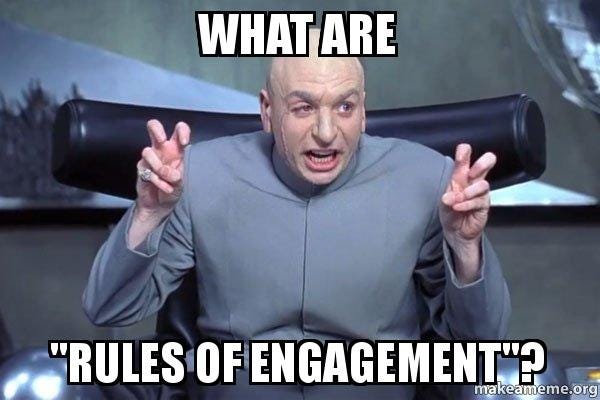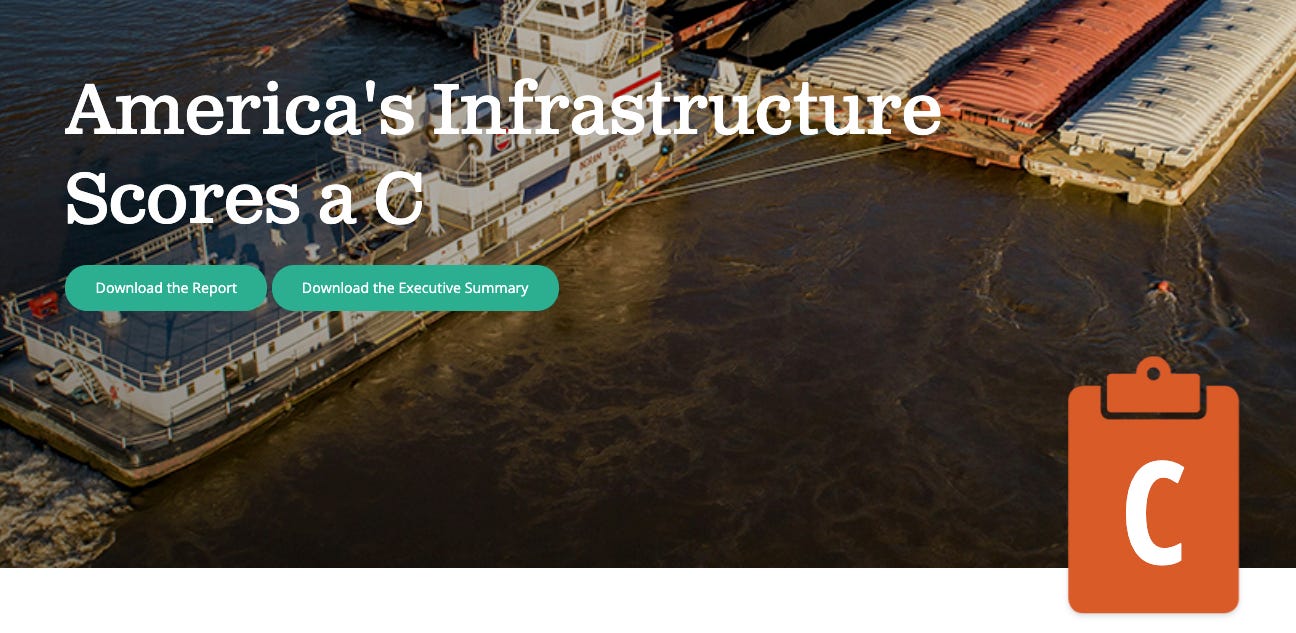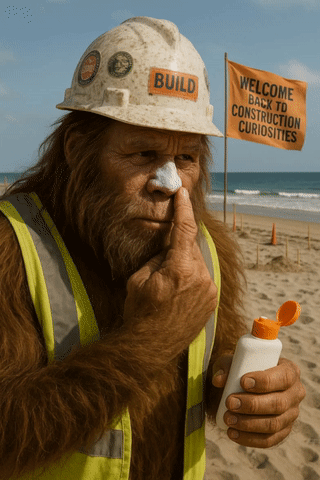Hey! Happy Saturday Sunday! Matt here.
Welcome to the Construction Curiosities newsletter!
It’s Summertime! And it’s still May June, so we are still talking through Procurement & Contracting. This week I set through Architect Interviews for a new project and someone asked if I was going to write about the Do’s and Don’ts of a good interview this week. Well, not this week. But maybe sometime. Probably not. But maybe. 😉
Summary
This week we will look at:
One Musing: GC as a who or a what?
One Report Card: 2025 America’s Infrastructure
Contech Corner: AI’s Double-Edged Sword
One Meme: The PM you vs The Estimator you
What’s a General Condition Anyway?
This one’s for the folks who hear “General Conditions” and nod along pretending they know… (like me for years as a subcontractor)
In this article, I’m going to make references to CMAR (Construction Manager at Risk) projects. Mostly cause that’s what on my mind right now, and being open book, it really matters what is in GCs and not in GCs.
Let’s break it down.
What Are General Conditions?
Straight from the AIA’s mouth:
“The general conditions are an integral part of the contract for construction for a large project and they are incorporated by reference into the owner/contractor agreement. They set forth the rights, responsibilities, and relationships of the owner, contractor, and architect.” – AIA A201
Translation? It’s the rules of the road.
It doesn’t lay out what’s being built (that’s the drawings and specs).
The General Conditions lay out how the game is played and who’s responsible for what.
It’s where you find the good stuff:
What constitutes a delay?
What triggers a Change Order?
What’s the process for dispute resolution?
Who owns temporary power?
Make sure you read the General Conditions! You can’t play by the rules and ensure everyone else is playing by the rules, if you haven’t read the rule book.
RTFC. Read the F’n Contract
Yes… The General Conditions are a Contract Document.
But Wait… Isn’t “General Conditions” Also a Budget Line Item?
Now here’s where some confusion usually kicks in.
When someone talks about “General Conditions” in a GMP budget, they’re usually talking about the line item covering project support costs. The stuff that keeps the site running day-to-day but isn’t installed in the final building.
Here’s the common split on a CMAR job for instance.
✅ Reimbursable General Conditions
These are actual project costs billed to the Owner:
Onsite Project Staff (PM, Supers, Admins)
Bonds & Insurance
Temporary utilities (power, water, internet)
Dumpsters & Porta Potties
Jobsite Trailers, Office Supplies
Construction fencing and SWPPP compliance
Safety gear and first aid kits
Site security & job signage
Basically: anything tied directly to running your jobsite.
❌ Non-Reimbursable (These Should Be in the Fee)
These typically fall under corporate overhead and profit, and should NOT be billed to the Owner as GCs:
Home Office Overhead
Corporate Profit
Travel & Per Diem
Vehicle Leases/Allowances
Phones, Copiers, Laptops
Accounting software licenses
Golf outings to “celebrate progress” 😏
Again RTFC! The contract should outline what is and what is not allowable to be billed in General Conditions.
Final Thought
General Conditions are one of the murkiest areas of a construction budget. And it’s where a lot of money quietly disappears.
Know what’s reimbursable. Know what’s not. And don’t let anyone tell you otherwise without showing you the receipts. (aka the Contract)
If you’re an Owner: scrutinize this section like you’re reviewing your teenager’s Venmo history.
If you’re a GC: stop trying to bill me for a new laptop on every project. We know you’ve been using that thing since Trump’s first term.
2025 Report Card for America’s Infrastructure
The 2025 grades range from a B in ports to a D in stormwater and transit. For the first time since 1998, no Report Card categories were rated D−. Among the 18 categories assessed, eight saw grade increases.
Every four years since 1998, the American Society of Civil Engineers has published its Report Card for America’s Infrastructure. It started with 10 categories and a simple mission: give the public and policymakers a straight answer about the state of our infrastructure. No jargon. Just clear letter grades.
Over time, the report grew with the complexity of the systems it measures. It now includes 18 categories. New ones were added as the world changed, like Broadband when internet access became essential, or Ports when e-commerce took off. It’s not just about roads and bridges anymore. It’s about the full ecosystem.
ASCE also launched state-level report cards to zoom in on local conditions. There are now more than 40 of them.
And it’s not just a scorecard. Many early recommendations have actually shaped public policy. Some ideas from that first report still haven’t been fully implemented. But the momentum is real. The Report Card keeps raising the bar, and decision-makers are listening.
Get the full 2025 report at: https://infrastructurereportcard.org/
ConTech Corner/ One Article
This one from Foundamental is worth a read:
AI’s Double-Edged Sword: Construction and VC
Construction is still a game of atoms. AI can whip up a beautiful design or analyze your schedule in seconds, but it still can’t hang a door or float a wall.
The physics haven’t changed. We still move dirt, pour concrete, and stack bricks with boots on the ground.
So while AI’s going to reshape how we coordinate and plan jobs, it won’t be laying pipe or checking formwork anytime soon. There’s a natural moat around the trades that no algorithm can cross (at least until Boston Dynamics builds a bricklayer with a journeyman card.)
The same goes for trust. This industry still runs on relationships… who picks up the phone, who shows up, and who gets it done.
AI might help with procurement or submittal reviews, but it can’t replace a trade partner who bails you out when you’re in a pinch on Friday afternoon.
Same story in venture capital: AI can crunch data, but it won’t catch lightning in a bottle. The real value still comes from human judgment, weird bets, and one-off insight.
Moral of the Story: Know what AI actually can do (but don’t replace the human in the loop). The winning edge is knowing where to blend AI and where to double down on human experience.
One Meme
This week, I got roasted for bad grammar in this Reels comment section ….
But… they say to write like you talk…
So for everyone who can’t read what I talk like here ya go:
Construction Curiosities is a reader-supported Newsletter. Please consider upgrading your subscription to help support the work we are doing. With your support, we have more big things planned and in the works.












